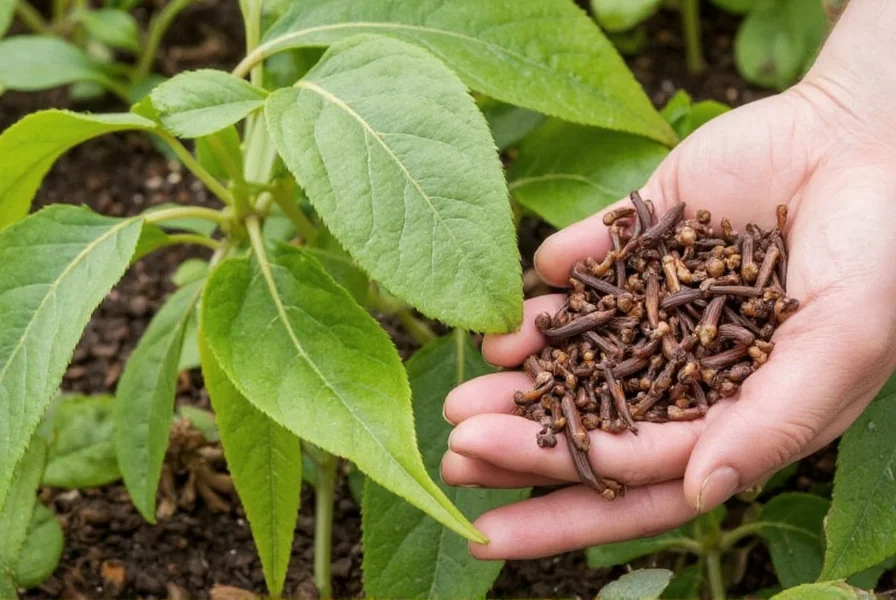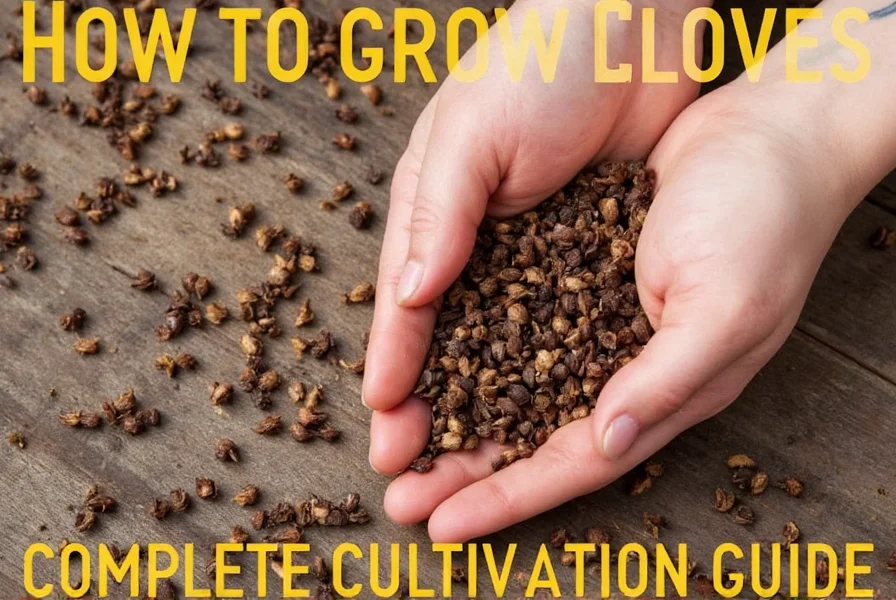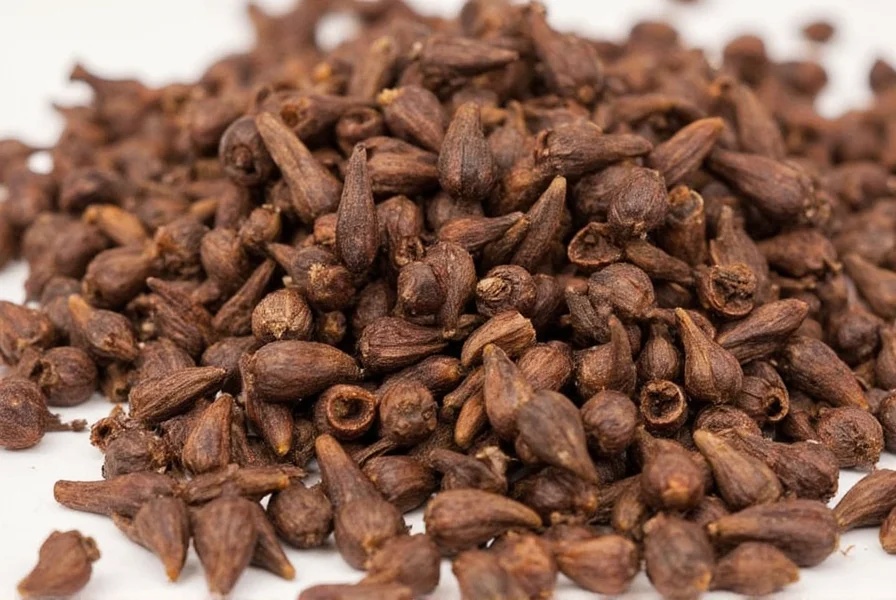Growing cloves (Syzygium aromaticum) requires specific tropical conditions but yields one of the world's most valuable spices. This comprehensive guide provides science-based cultivation techniques for home gardeners and small-scale growers in suitable climates.
Understanding Clove Plant Biology
Cloves are the dried flower buds of the evergreen clove tree, native to Indonesia's Maluku Islands. These slow-growing trees reach 8-12 meters at maturity and produce aromatic buds only after establishing a robust root system. Unlike common misconceptions, cloves cannot be grown as annual plants—they're perennial trees requiring long-term commitment.
Essential Climate Requirements for Growing Cloves
Clove trees thrive exclusively in tropical environments with specific parameters:
| Climate Factor | Optimal Range | Tolerance Limits |
|---|---|---|
| Temperature | 23-32°C (73-90°F) | Frost kills trees; below 18°C stunts growth |
| Annual Rainfall | 1,500-2,500 mm | Dry periods must not exceed 3 months |
| Humidity | 70-90% | Below 60% causes bud drop |
| Altitude | Sea level-800m | Higher elevations reduce yield |
Attempting to grow cloves outside USDA zones 10-12 typically fails. Regions like Zanzibar, Madagascar, and southern India demonstrate ideal conditions where commercial cultivation succeeds. For those outside tropical zones, container growing with greenhouse protection offers limited potential but rarely produces harvestable buds.
Soil Preparation for Successful Clove Cultivation
The foundation of how to grow cloves properly begins with soil preparation. Clove trees require:
- Deep, well-draining loamy soil (sandy clay loam preferred)
- pH between 5.5-6.5 (slightly acidic)
- High organic matter content (minimum 3%)
- Avoid waterlogged or saline soils
Prepare planting areas 2-3 months before transplanting by incorporating 20-30kg of well-rotted compost per square meter. Create raised beds 30-45cm high in areas with heavy rainfall to prevent root rot. For container growing, use a mix of 40% potting soil, 30% perlite, and 30% coconut coir.

Planting Methods: Seeds vs. Saplings
When learning how to grow cloves, you have two propagation options:
Starting from Fresh Seeds
Use only recently harvested, unprocessed cloves (not grocery store spices). Soak seeds for 24 hours, then plant 1-2cm deep in seed trays with sterile medium. Maintain 85% humidity and 27°C temperature. Germination occurs in 2-4 weeks. Transplant seedlings when they reach 15cm height.
Establishing with Nursery Saplings
For faster results, plant 1-2 year old nursery saplings during early monsoon season. Dig holes twice the root ball size, spacing trees 8-10 meters apart. Position saplings so the root collar sits level with soil surface. Water thoroughly after planting and apply 5cm mulch layer.
Essential Care Practices for Healthy Clove Trees
Proper maintenance determines success in how to grow cloves effectively:
Watering Schedule
Young trees require consistent moisture—water 2-3 times weekly during dry periods. Mature trees need less frequent but deeper watering. Avoid overhead irrigation to prevent fungal diseases. Drip irrigation systems work best, delivering 25-40 liters weekly during dry months.
Fertilization Requirements
Apply balanced organic fertilizer every 3 months during first 3 years:
- First year: 100g NPK 10-10-10 per tree
- Second year: 200g NPK 10-10-10 per tree
- Third year: 300g NPK 10-10-10 per tree
- Mature trees: 500g NPK 4-8-8 annually
Supplement with magnesium sulfate (Epsom salt) at 50g per tree quarterly to prevent yellowing leaves.
Managing Pests and Diseases in Clove Orchards
Common threats to clove cultivation include:
- Shoot Borer: Prune affected branches immediately; apply neem oil spray
- Leaf Spot: Remove infected leaves; improve air circulation
- Root Rot: Prevent through proper drainage; treat with biofungicides
- Bud Mites: Spray with horticultural oil during bud formation
Implement integrated pest management by introducing beneficial insects like ladybugs and lacewings. Avoid chemical pesticides that contaminate flower buds.
Harvesting and Processing Cloves
Understanding when to harvest cloves determines quality:
- Harvest buds when they turn pink but before opening (typically June-August)
- Hand-pick buds early morning for best oil content
- Spread buds in single layer on clean mats
- Sun-dry for 5-7 days until they turn dark brown and snap when bent
- Store in airtight containers away from light

Troubleshooting Common Clove Growing Problems
Address these frequent issues when learning how to grow cloves:
- No flowering after 7 years: Check soil pH; ensure adequate sunlight; verify climate suitability
- Yellowing leaves: Indicates magnesium deficiency or overwatering
- Bud drop: Caused by low humidity, temperature fluctuations, or water stress
- Stunted growth: Test soil for nutrient deficiencies; check root health
Realistic Expectations for Clove Production
Many aspiring growers underestimate the timeline for how to grow cloves profitably. Trees typically:
- Begin flowering at 5-7 years old
- Reach peak production at 15-20 years
- Produce 2-4kg dried cloves annually at maturity
- Remain productive for 40-60 years
Commercial operations require patience—your first significant harvest won't come for nearly a decade. This long-term perspective separates successful clove growers from those who abandon the project prematurely.
Conclusion: Mastering Clove Cultivation
Successfully growing cloves demands matching your environment to the plant's tropical requirements, proper soil preparation, and patient long-term care. While challenging outside ideal climates, those in suitable regions can enjoy this rewarding crop with exceptional culinary and economic value. Remember that consistent attention to humidity, soil conditions, and pest management determines your success more than any single factor.
Frequently Asked Questions
How long does it take for a clove tree to produce harvestable buds?
Clove trees typically begin producing harvestable flower buds 5-7 years after planting. Seed-grown trees may take up to 8 years, while grafted saplings might produce slightly earlier. Maximum yield occurs between 15-20 years of age, with productive trees continuing to yield for 40-60 years under proper care.
Can I grow cloves in a container or indoors?
While possible to grow clove trees in containers for limited periods, they rarely produce harvestable buds outside tropical environments. Container-grown trees require 15-gallon pots minimum, consistent 70-90% humidity, temperatures above 21°C year-round, and 6+ hours of direct sunlight. Even with ideal conditions, container trees typically reach only 2-3 meters height and produce minimal harvests compared to in-ground cultivation.
What's the best way to propagate clove trees for home growing?
For home growers, starting with nursery-bought saplings (1-2 years old) provides the highest success rate. If propagating from seed, use fresh, unprocessed cloves (not grocery store spices) soaked for 24 hours before planting 1-2cm deep in sterile seed mix. Maintain 85% humidity and 27°C temperature for germination, which takes 2-4 weeks. Air layering works for established trees but requires horticultural expertise.
Why are my clove tree's leaves turning yellow?
Yellowing leaves in clove trees typically indicate magnesium deficiency or improper watering. Check soil drainage—waterlogged conditions cause root rot leading to yellowing. Apply magnesium sulfate (Epsom salt) at 50g per tree quarterly. If new growth remains green while older leaves yellow, it's likely natural senescence. During dry periods, insufficient watering can also cause yellowing, so maintain consistent soil moisture without saturation.











 浙公网安备
33010002000092号
浙公网安备
33010002000092号 浙B2-20120091-4
浙B2-20120091-4